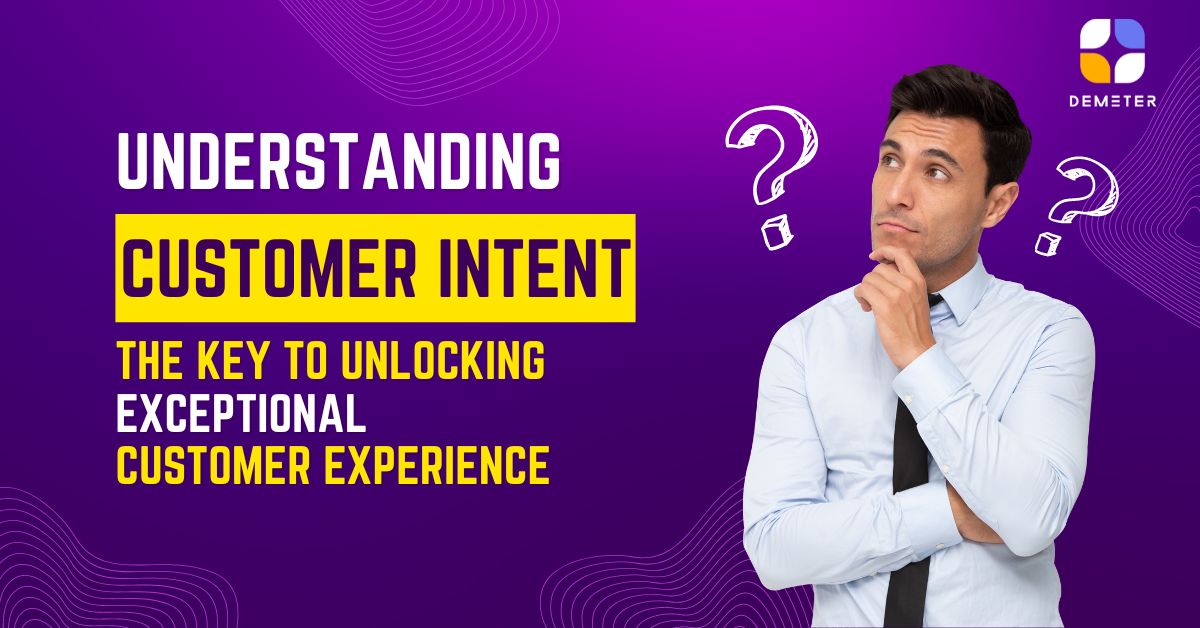In today’s competitive marketplace, knowing what your customers want is essential. But there’s more to it than just understanding their preferences—it’s about getting to the heart of their intent. So, what exactly is customer intent, and how is it different from customer preference? Let’s break it down and explore how these insights can help your business provide better service and enhance the overall customer experience (CX).
What is Customer Intent?
Customer intent is all about understanding the motivation or purpose behind a customer’s actions. It’s not just about what a customer does, but *why* they do it. For example, when a customer searches for a product on your site, are they looking to make a purchase, gather information, or just compare prices? Knowing their intent helps you respond in a way that meets their needs more effectively.
Think of customer intent as the driving force behind a customer’s journey. It’s about looking beyond the obvious to understand what the customer truly wants to accomplish. By tapping into this intent, businesses can anticipate needs, offer relevant solutions, and create a more personalized and satisfying experience.
The Power of Understanding Intent
Let’s say you run an online clothing store. A customer browses your site and adds items to their cart but doesn’t check out. If you only focus on their actions, you might think they’ve lost interest. But if you dig deeper into their intent—maybe they’re waiting for a sale, need more information, or are just weighing their options—you can tailor your follow-up accordingly. You might send them a personalized email with a discount offer, provide additional product details, or highlight your store’s free shipping to encourage them to complete the purchase.
By understanding customer intent, you can make smarter decisions and take actions that align with what the customer really wants, ultimately driving better results and enhancing their overall experience.

Customer Intent vs. Customer Preference: What’s the Difference?
While customer intent and preference are closely related, they’re not the same. Understanding the difference is key to effectively meeting your customers’ needs.
- Customer Intent
As mentioned earlier, customer intent is about the *why* behind a customer’s actions. It’s the motivation that drives them to interact with your business in a certain way. Intent is often situational and can change based on context, time, or external factors. For instance, a customer might intend to buy a gift for a friend today but might be shopping for themselves next week. Their intent shifts depending on their immediate needs.
- Customer Preference
Customer preference, on the other hand, refers to the choices or tendencies a customer consistently shows over time. It’s about what they generally like or prefer, such as a favorite product category, preferred payment method, or the way they like to be contacted. Preferences are more stable and reflect a customer’s long-term likes and dislikes. For example, a customer might prefer receiving emails over phone calls. This preference doesn’t change often and is part of their overall profile. Understanding preferences helps you provide a consistent experience that aligns with what the customer likes.
- Why Both Matter
Both customer intent and preference are essential for delivering a great customer experience. While intent helps you understand and respond to immediate needs, preferences ensure that these responses are delivered in a way that suits the customer’s overall expectations.
Going back to the online clothing store example: knowing a customer’s intent (e.g., they’re shopping for a gift) lets you recommend appropriate products. Knowing their preferences (e.g., they like eco-friendly products and prefer email communication) allows you to tailor your recommendations and communicate in a way that resonates with them. By combining insights into both intent and preference, you can create a more personalized and impactful customer experience.
How Zendesk Helps You Understand and Act on Customer Intent
Zendesk offers tools that help businesses capture and analyze customer intent, making it easier to understand why customers are reaching out and what they hope to achieve. With AI and automation, Zendesk can spot patterns and provide insights that empower support teams to act quickly and appropriately.
For instance, Zendesk’s AI-powered chatbots can assess customer intent in real-time, guiding customers to the right resources or support agents. This not only makes your team more efficient but also ensures customers feel understood and valued, leading to a better overall experience.
By using Zendesk’s tools, businesses can gain a deeper understanding of both customer intent and preference, enabling them to deliver a more responsive, personalized, and satisfying experience.
Wrapping It Up
When it comes to delivering an exceptional customer experience, understanding customer intent is a powerful tool. It allows businesses to look beyond surface-level interactions and connect with customers on a deeper level, addressing their immediate needs while also respecting their long-term preferences.
By recognizing the difference between intent and preference—and using both insights strategically—you can create more meaningful and effective customer interactions. Whether you’re looking to enhance your support processes, tailor your marketing efforts, or simply understand your customers better, focusing on intent will help you meet their needs in the most effective way possible.
With tools like Zendesk, businesses can harness the power of customer intent and preference to not only improve customer satisfaction but also build lasting relationships that drive growth and loyalty.
Find out more today

WeChat: demeter-ict





